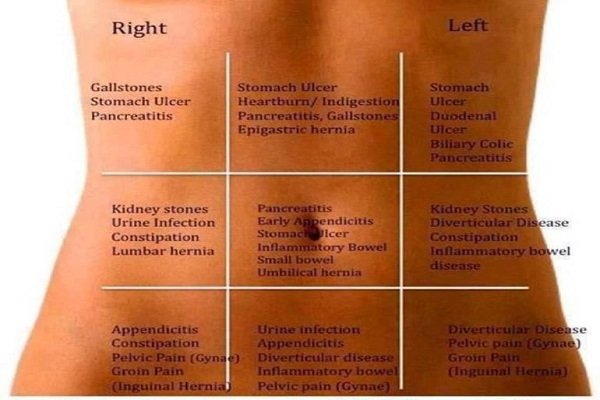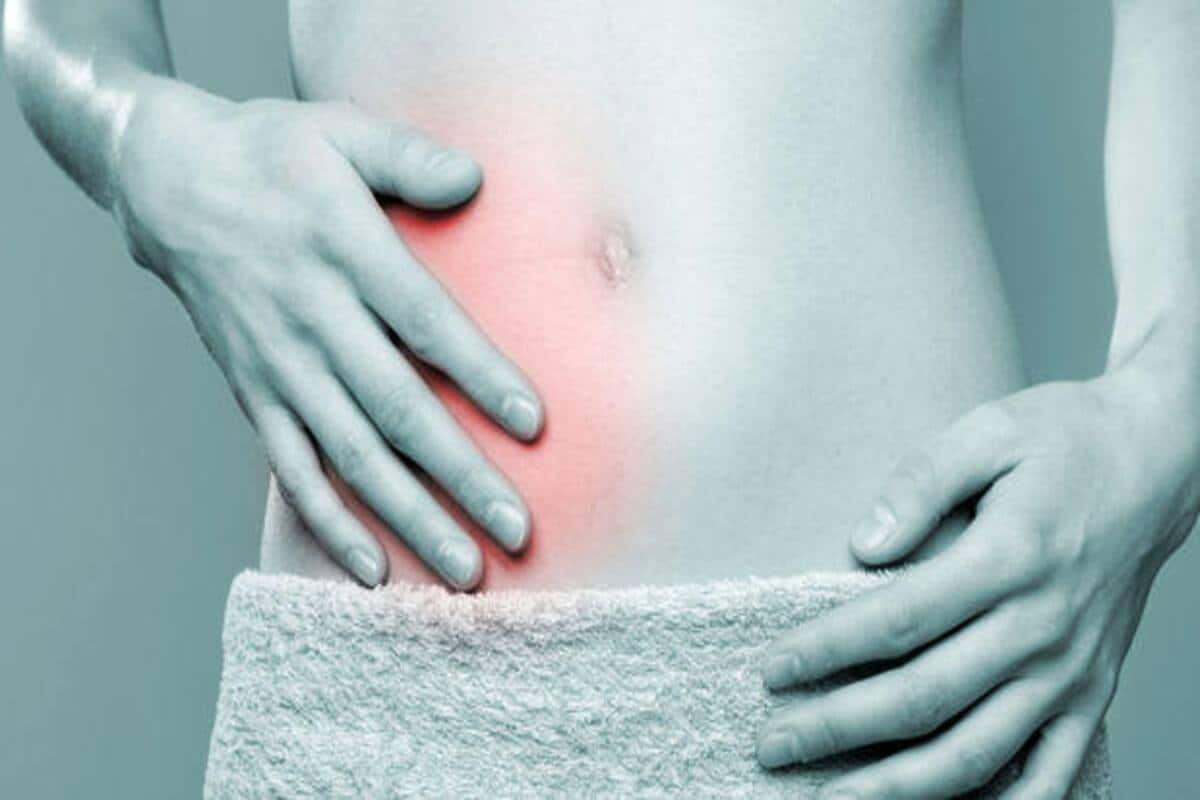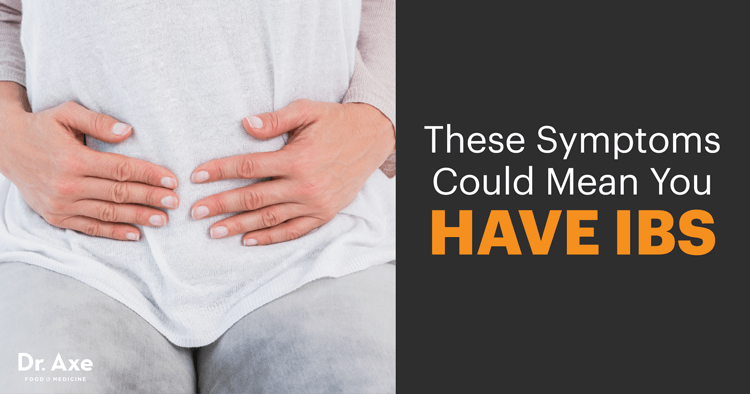Anxiety And Panic Disorder
About 40% of people with panic disorder experience chest pain at some time.
Noncardiac chest pain associated with panic disorder is unique in some ways, but you always want to err on the side of caution.
People who have anxiety or even panic disorder can also experience life-threatening causes of chest pain.
There are less common causes of right-sided chest pain that are sometimes overlooked. These include shingles, mediastinal tumors , and panic or anxiety attacks.
Lower Abdominal Pain In Teenage Girls
A few causes of abdominal pain are specific to teenage girls .
Signs And Symptoms Of Abdominal Pain
Abdominal pain may take several different forms. In addition to how severe it is, abdominal pain can be described in the following ways:
Generalized Pain This refers to pain felt in more than half of your abdominal area, and is typical of stomach viruses, indigestion, or gas as the cause of your pain.
Localized Pain This refers to pain felt in just one area of your abdomen, and is typical of a problem with an organ like your stomach, appendix, or gallbladder as the cause of your pain.
Cramping This type of pain come and goes, or changes in its severity or perceived position in your abdomen. Cramping is rarely serious and is typical of gas, passing a stool, or menstruation as the cause of your pain.
Colicky Pain
Its important to call your doctor if your abdominal pain is so severe that you cant move without feeling more pain, or sit still in a comfortable position.
- Fever
- Nausea and vomiting that doesnt resolve
- Weight loss
- Abdomen very tender to touch
- Swollen abdomen
Read Also: How To Lose Stomach Fat At The Gym
When Should I Go To Er
Seek emergency care if you have:
- Severe pain that doesnt go away.
- Signs of blood in your poop or bloody vomit.
- Signs of severe blood loss, such as paleness and faintness.
A note from Cleveland Clinic
Stomach ulcers are common and treatable, but they should be taken seriously. Even when they dont cause symptoms, they arent a good sign. A stomach ulcer means that your natural stomach acid is overwhelming your protective stomach lining. Thats a situation that can only get worse if it isnt managed. Lifestyle changes may help, but youll still need to treat the underlying cause. Its probably either NSAID use or a common bacterial infection. Your healthcare provider can help prescribe the right medicines for your condition.
Cross Reactivity And Oral Allergy Syndrome

When you have a life-threatening allergic reaction to a certain food, your doctor will probably recommend that you avoid similar foods, too. For example, if you react to shrimp, you’re probably allergic to other shellfish like crab, lobster, and crayfish. This is called cross-reactivity.
Another example of cross-reactivity is oral allergy syndrome. It happens in people who are highly sensitive to ragweed. During ragweed season, when they try to eat melons, especially cantaloupe, their mouths may itch. Similarly, people who have severe birch pollen allergy may also react to apple peels.
Read Also: Why Is My Stomach Hurting When I Eat
What Is Abdominal Pain
Abdominal pain is discomfort or other uncomfortable sensations that you feel in your belly area. Just about everybody at one time or another will get a bellyache.
Most causes of abdominal pain aren’t reasons to worry, and your doctor can easily diagnose and treat the problem. Sometimes, though, it can be a sign of a serious illness that needs medical attention.
How Does The Stomach Work With The Rest Of The Gi Tract
Each part of your GI tract breaks down food and liquid and carries it through your body. During the digestive process, your body absorbs nutrients and water. Then, you expel the waste products of digestion through your large intestine.
Food moves through your GI tract in a few steps:
Don’t Miss: What Can I Give Cat For Upset Stomach
Constant Stomach Pain: Causes Treatment Home Remedies
Stomach pain is essentially referred to cramps or a kind of dull and chronic pain in the abdominal area. Almost every individual has experienced stomach pain at least once in their lifetime. However, it should be noted that there may be various underlying cause of abdominal pain. Constant stomach pain can be a matter of irritation as it affects the mood and daily life of the person experiencing it. It is always wise to have a talk with a general physician in case of unbearable symptoms.
When To See A Doctor
Usually, you can treat some mild cases of abdominal pain at home. Placing an ice pack on the area, for example, can help ease symptoms of muscle strain. Just remember that taking aspirin or ibuprofen can cause stomach irritation, which can make abdominal pain worse.
But, if your upper abdomen pain is severe or lasts for more than a few days, you should make an appointment with your doctor. Your doctor can determine if your pain is nothing to worry about, or diagnose the underlying condition and come up with a treatment plan.
Read Also: How Do You Check For Stomach Cancer
How Is Abdominal Pain Treated
Treating abdominal pain depends on its cause. Options include:
- Medications for inflammation, gastroesophageal reflux disease or ulcers.
- Antibiotics for infection.
- Changes in personal behavior for abdominal pain caused by certain foods or beverages.
- Local or spinal injections of numbing agents or corticosteroids by pain management physicians.
In more severe cases like appendicitis and hernia, surgery is necessary.
What Tests Will Be Done To Diagnose A Peptic Ulcer
Endoscopy. An upper endoscopy exam is expedient because allows healthcare providers to see inside your digestive tract and also take a tissue sample to analyze in the lab. The test is done by passing a thin tube with a tiny camera attached down your throat and into your stomach and duodenum. Youll have medication to numb your throat and help you relax during the test. Your healthcare provider may use the endoscope to take a tissue sample to test for signs of mucous damage, anemia, H. pylori infection or malignancy. If they take a sample, you wont feel it.
Imaging tests. Imaging tests to look inside the stomach and small intestine include:
- Upper GI series. An upper GI X-ray exam examines the stomach and duodenum through X-rays. Its less invasive than an endoscopy. For the X-ray, youll swallow a chalky fluid called barium, which will coat your esophagus, stomach and duodenum. The barium helps your digestive organs show up better in black and white images.
- CT scan. Your healthcare provider might recommend a CT scan if they need to see your organs in more detail. A CT scan can show complications such as a perforation in the stomach or intestinal wall. For the test, youll lie on a table inside a scanner machine while X-rays are taken. You may drink or have an injection with contrast fluid to make your organs show up better in images.
Tests for H. pylori. Your healthcare provider might want to test you separately for H. pylori infection. Tests may include:
Don’t Miss: How To Get Tested For Stomach Cancer
The Link Between Your Gut Microbiome And Your Health
In addition, many of the underlying conditions that cause abdominal pain can lead to serious complications, including the possibility of structural damage to the digestive system from infection, cancer and its treatments, and inflammatory bowel disease .
To reduce the risk of complications, its important to seek medical attention for your abdominal pain if its sudden and severe, or if it includes symptoms like fever, bloody stool, weight loss, nausea and vomiting, or visible swelling.
Gut Feeling: How To Know If Stomach Pain Is Serious

Abdominal pain is the single leading reason for emergency room visits in the U.S. according to the U.S. Department of Health and Human Services, accounting for more than 12 million of the nearly 139 million annual ER visits. Most people call it stomach pain, but itâs not always a stomach problem. Your abdomen holds many other organs, too, including your intestines , pancreas, liver, gallbladder, kidneys, spleen and appendix.
So its not surprising that, just as with chest pain or a headache, it can be difficult to tell whats really going on in there when your tummyâs not feeling well. Add in other vague symptoms such as nausea and vomiting and you could have the stomach flu, food poisoning, gallstones, kidney stones or any number of other conditions.
Here are some ways to tell what the source of your pain is and when you should seek medical care.
Also Check: How To Lose Stomach Fat But Not Buttocks
Lower Back Pain 6 Common Causes And What To Do About It
Back pain is common. Depending on what’s causing it, the fix could be simple.
Almost 40% of American adults experienced back pain within the last three months, yet the cause of it remains a mystery for many people.
That’s likely due in part to the fact that back pain has so many potential underlying causes, but it’s also because many people would rather pop over-the-counter pain pills instead of work to identify the actual cause of their back pain. And that’s a shame, because often back pain can be fixed with some simple efforts.
If you’ve been struggling with back pain, the solution might be simpler than you think. Learn how to get rid of back pain through stretching, exercise and other drug-free treatments.
What Are The Parts Of The Stomachs Anatomy
Your stomach has five distinct sections:
- The cardia is the top part of your stomach. It contains the cardiac sphincter, which prevents food from traveling back up your esophagus.
- The fundus is a rounded section next to the cardia. It’s below your diaphragm .
- The body is the largest section of your stomach. In the body, your stomach contracts and begins to mix food.
- The antrum lies below the body. It holds food until your stomach is ready to send it to your small intestine.
- The pylorus is the bottom part of your stomach. It includes the pyloric sphincter. This ring of tissue controls when and how your stomach contents move to your small intestine.
Also Check: Why Does My Stomach Cramp After I Eat
What Are The Symptoms Of A Bleeding Ulcer
Bleeding ulcers dont always cause pain. Sometimes the first signs of a bleeding ulcer are signs of anemia. These include:
- Dizziness or lightheadedness.
You might have a heavier bleed if you notice:
- Blood in your poop, or black poop that resembles tar.
- Bloody vomit.
These symptoms require urgent medical attention.
Other Causes Of Abdominal Bloating And Shortness Of Breath
Abdominal bloating has many causes. It is more common in people who experience functional gastrointestinal disorders like irritable bowel syndrome or gastroparesis. Bloating can be due to the buildup of gas, fluids, or food in the stomach.
Overeating or eating foods known to contribute to bloating and gas, such as cabbage, beans, and lentils, may cause bloating.
Abdominal bloating can affect the diaphragm, a muscular partition between the chest and abdomen. The diaphragm assists in breathing, which means bloating can lead to shortness of breath. This happens if the pressure in the abdomen is enough to restrict the movement of the diaphragm.
Being short of breath can cause you to take small, short breaths. This can lead to swallowing air, which is known as aerophagia. Difficulty breathing can be brought on by anxiety or panic attacks, chronic obstructive pulmonary disease , pneumonia, and asthma attacks.
There are conditions that can result in both abdominal bloating and shortness of breath.
Any condition that leads to the buildup of air or foodstuffs could cause both bloating and shortness of breath. Also, stool inside the intestines, irritable bowel syndrome, celiac disease, lactose intolerance, constipation, ileus, bowel obstruction, and gastroparesis could cause bloating and shortness of breath.
If bloating or shortness of breath is severe, seek immediate medical treatment.
You May Like: How To Settle Your Dogâs Upset Stomach
Don’t Miss: Why Does Your Stomach Bloat After Eating
What Are The Treatment Procedures Of Constant Stomach Pain
In the first place once the patient with constant stomach pain visits the doctor, he is going to diagnose the underlying problem of such form of pain. There may be a set of diagnostic tests which may be recommended. Such tests are done to rule out problems of infection of the internal organs. The medical treatment is followed for constant stomach pain once the cause is known.
- In case of the problems appendicitis or infection in the gall bladder, surgery has to be done as a form of treatment. The doctor may appoint a date for surgery and medications may be given.
- In case of milder causes of the pain like constipation or food poisoning, the doctor may give IV fluids to the patient.
- Painkillers may be prescribed to the patient along with other medications to clear out the toxins from the body.
- Patient may be given antacid to cure the acid reflux so occurred.
What Is A Bloated Stomach
A bloated stomach is first and foremost a feeling of tightness, pressure or fullness in your belly. It may or may not be accompanied by a visibly distended abdomen. The feeling can range from mildly uncomfortable to intensely painful. It usually goes away after a while, but for some people, its a recurring problem. Digestive issues and hormone fluctuations can cause cyclical bloating. If your bloated stomach doesnt go away, you should seek medical care to determine the cause.
Recommended Reading: How To Get Rid Of Stomach Pudge
Will Surgery Cure A Peptic Ulcer
Medical therapy works in most people with peptic ulcers. Sometimes, medical therapy does not work, or a person cant take the therapy for some reason. Surgery is an alternative to medical therapy for these people.
Surgical operations often used in peptic ulcers include the following:
- Vagotomy: Cutting the vagus nerve, which transmits messages from the brain to the stomach, can reduce acid secretion. However, this can also interfere with other functions of the stomach. A newer operation cuts only the part of the nerve that affects acid secretion.
- Antrectomy: This is often done in conjunction with a vagotomy. It involves removing the lower part of the stomach . This part of the stomach produces a hormone that increases production of stomach acid. Adjacent parts of the stomach may also be removed.
- Pyloroplasty: This procedure also is sometimes done with vagotomy. It enlarges the opening between the stomach and duodenum to encourage passage of partially digested food. Once the food has passed, acid production normally stops.
- Tying off an artery: If bleeding is a problem, cutting off the blood supply to the ulcer can stop the bleeding.
Musculoskeletal Or Other Causes

An injury may feel like a heart attack, as can certain mental health issues and infections.
Certain clothing, like too tight sports bras or underwires, can also cause musculoskeletal chest pain.
You May Like: What To Do For Toddler With Stomach Virus
Don’t Miss: How To Lose Stress Stomach Fat